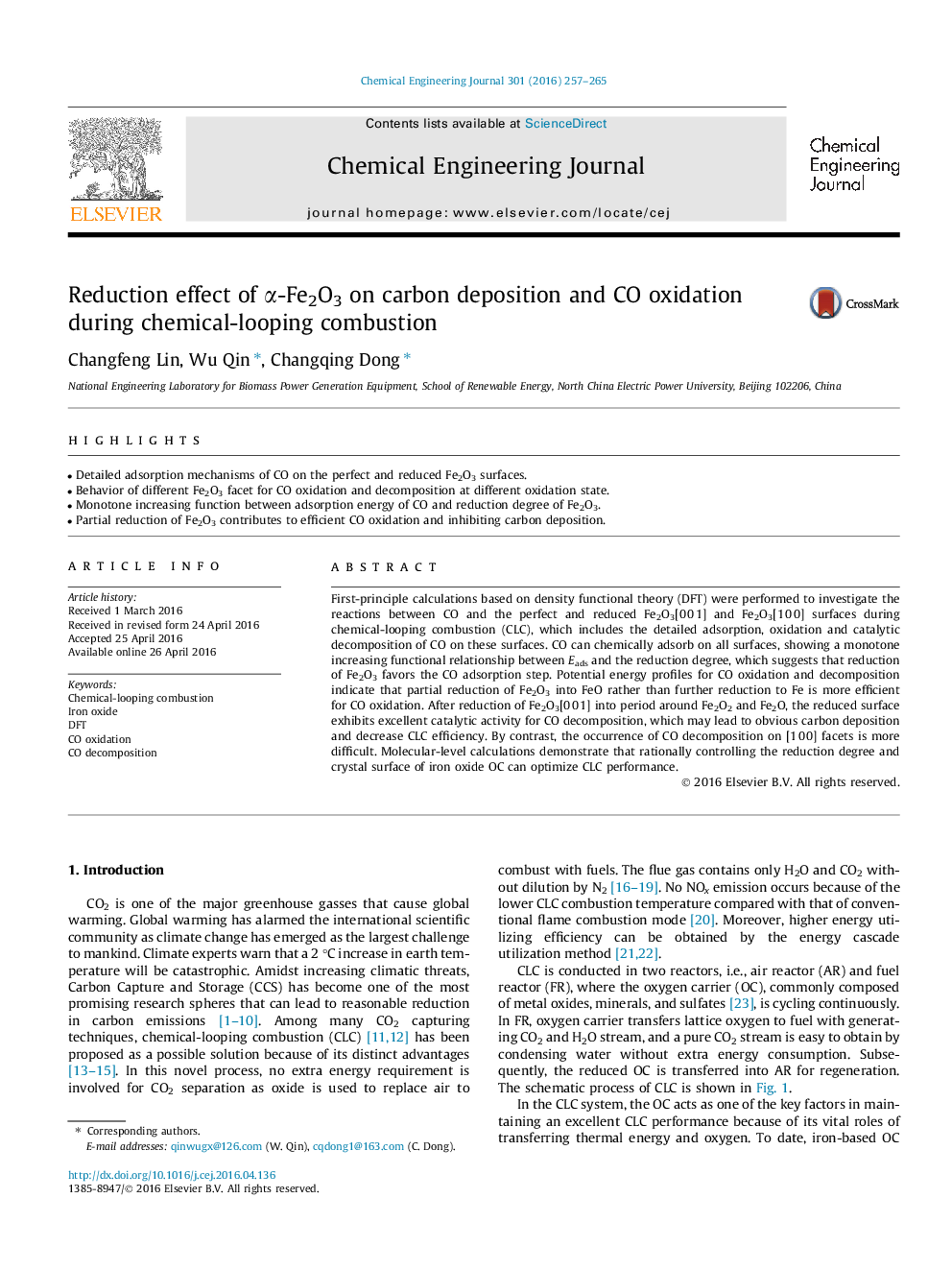| کد مقاله | کد نشریه | سال انتشار | مقاله انگلیسی | نسخه تمام متن |
|---|---|---|---|---|
| 145390 | 456339 | 2016 | 9 صفحه PDF | دانلود رایگان |

• Detailed adsorption mechanisms of CO on the perfect and reduced Fe2O3 surfaces.
• Behavior of different Fe2O3 facet for CO oxidation and decomposition at different oxidation state.
• Monotone increasing function between adsorption energy of CO and reduction degree of Fe2O3.
• Partial reduction of Fe2O3 contributes to efficient CO oxidation and inhibiting carbon deposition.
First-principle calculations based on density functional theory (DFT) were performed to investigate the reactions between CO and the perfect and reduced Fe2O3[0 0 1] and Fe2O3[1 0 0] surfaces during chemical-looping combustion (CLC), which includes the detailed adsorption, oxidation and catalytic decomposition of CO on these surfaces. CO can chemically adsorb on all surfaces, showing a monotone increasing functional relationship between Eads and the reduction degree, which suggests that reduction of Fe2O3 favors the CO adsorption step. Potential energy profiles for CO oxidation and decomposition indicate that partial reduction of Fe2O3 into FeO rather than further reduction to Fe is more efficient for CO oxidation. After reduction of Fe2O3[0 0 1] into period around Fe2O2 and Fe2O, the reduced surface exhibits excellent catalytic activity for CO decomposition, which may lead to obvious carbon deposition and decrease CLC efficiency. By contrast, the occurrence of CO decomposition on [1 0 0] facets is more difficult. Molecular-level calculations demonstrate that rationally controlling the reduction degree and crystal surface of iron oxide OC can optimize CLC performance.
Journal: Chemical Engineering Journal - Volume 301, 1 October 2016, Pages 257–265